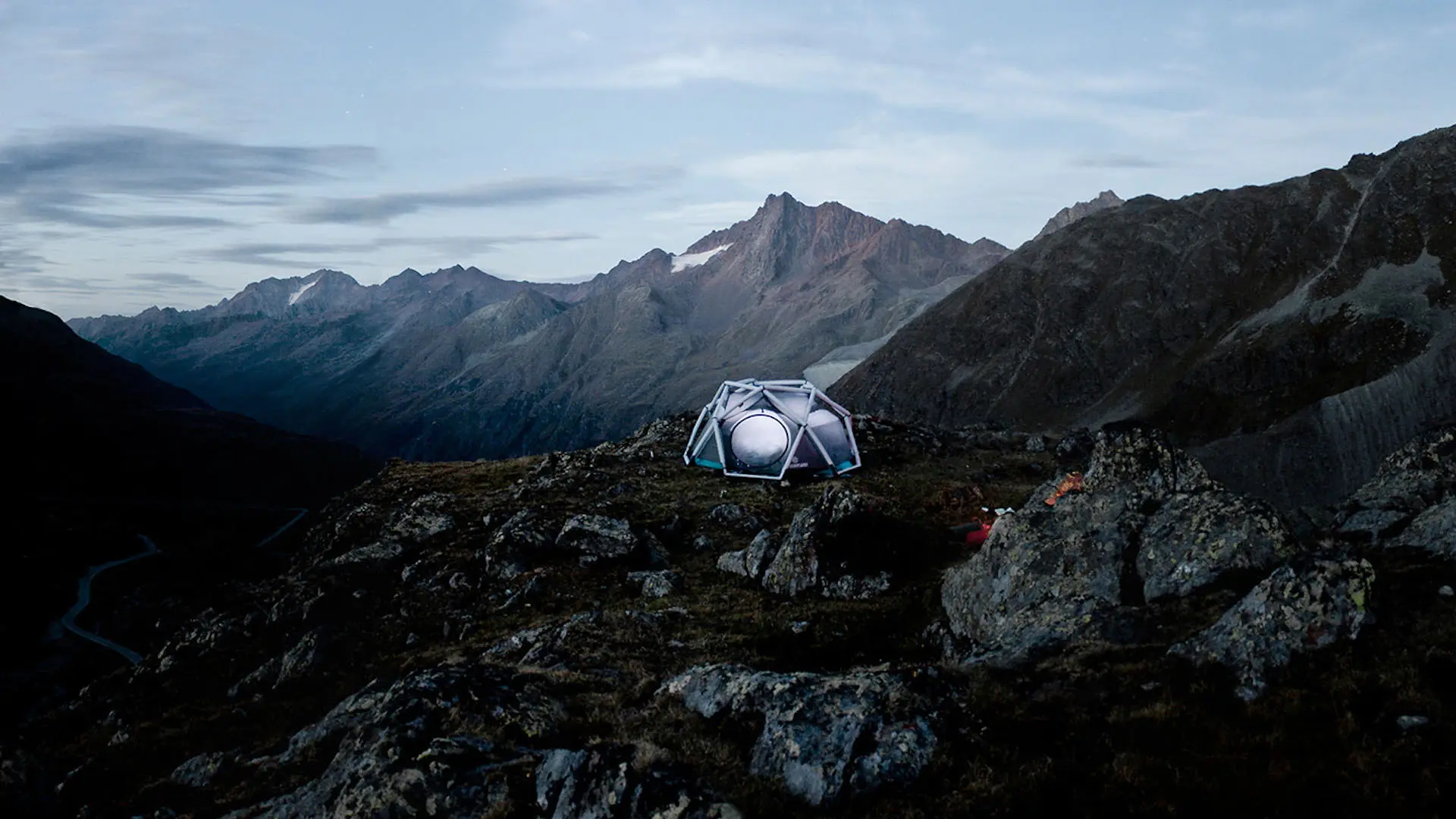From sketches to products – Interview with Begüm Tomruk of LIXIL Global Design
A unique opportunity to dive into the role and importance of sketches in the creative process!
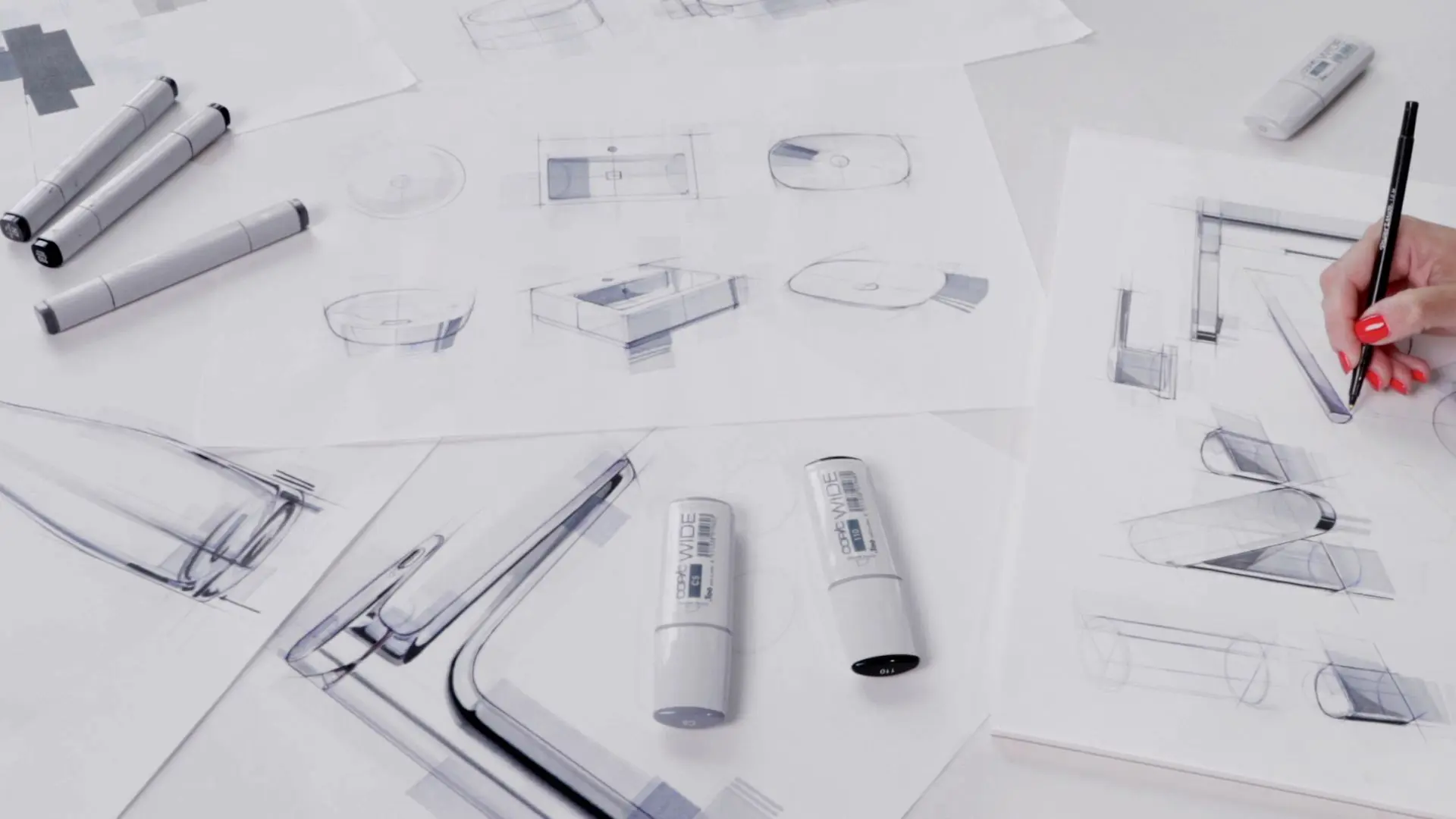
Sketches are an essential part of the design process, as they provide a quick and efficient way for designers to explore ideas, refine concepts, and communicate their vision to clients and team members. Additionally, they are a valuable form of documentation, providing a visual record of the design process and the evolution of the final product.
We wanted to know more about how they are used by the LIXIL Global Design team and decided to go behind the scenes in a live talk held on our Instagram page.
“At LIXIL Global Design, sketching is an important skill set. As a team we use both analog and digital sketches during our design processes. Regardless of whether it’s an ideation or a full presentation – the power of the image is profound to make great designs!” says Begüm Tomruk, Lead Industrial Designer at LIXIL Global Design.
Brilliantly providing an unrivaled experience through products that are utilized by more than a billion people everyday – LIXIL Global Design seamlessly transforms trends and insights into experiences for consumers with a design team that has won over 580 international design awards.
If you have not ‘met’ them yet, LIXIL Global Design is the in-house design team of brands such as GROHE, American Standard, INAX and many more and is based in some of the most cosmopolitan cities in the world, from New York to London, Tokyo, Singapore and Shanghai.

From your point of view, where does the design process start for an industrial designer?
Begüm Tomruk:
“I think it starts before we’re really aware of it! It starts in our mind before we begin to reflect everything on paper. For me personally – it really starts from the insights and the “pre-search” from where we can gather the consumers needs and understand how we can bring meaningful products that add value to the brand and add value to the consumer.
So it all begins at a very early stage!”
At what point do you arrive at sketches and what role do they play in the design process?
Begüm Tomruk:
“It definitely depends on the task and the project overall.
Sometimes as designers – we might get really quick tasks and projects that need to be finalized fast. So in this case, some design sketching might come in but only as a quick ideation process. There are then some tasks that we directly start from 3D by utilizing CAD and then bring in design sketches into the process.
On the other hand, if we have a really long term project – we try to bring in design sketches into the process first right after the pre-search phase and understanding the consumer so that we can express and ideate on paper.

This is something that I find really meaningful and I really recommend it to all designers. If one is able to sketch – they should take that time, at least a couple days to ideate. It doesn’t matter how “appealing” it looks. It will simply give one the motivation to explore and see what they can do for the consumer.
But of course – each designer and each organization has different dynamics. At the end of the day, it all depends on one’s style and how they work in their own unique way.”
Taking into consideration the reality of LIXIL Global Design, how are sketches utilized? What is their function for you? Who is responsible for creating them and based on what inputs?
Begüm Tomruk:
“The sketches are initially utilized by putting them on a board and presenting ideas with the design or the external team. This is called ideation sketching.
The second style that we utilize is presentation sketching. These comprise digital sketches that start with the creation of analog sketching. It’s a way to narrate a story, really educate the people in the organization and create a commercial tool to express the design benefits, the design DNA in a really authentic way.
This process is blended by using markers strokes, airbrush details and color, material and finish options. With digital sketching it’s extremely important to find that unique style. When one looks at our sketches they should instantly know that it’s from LIXIL Global Design.
We believe that it’s vital to integrate the sketches into a design presentation to tell the story of the product on its own. If these works are shared with a salesperson of the organization – they could really explain the product without going through 20 pages. So, this is the aim of it.”
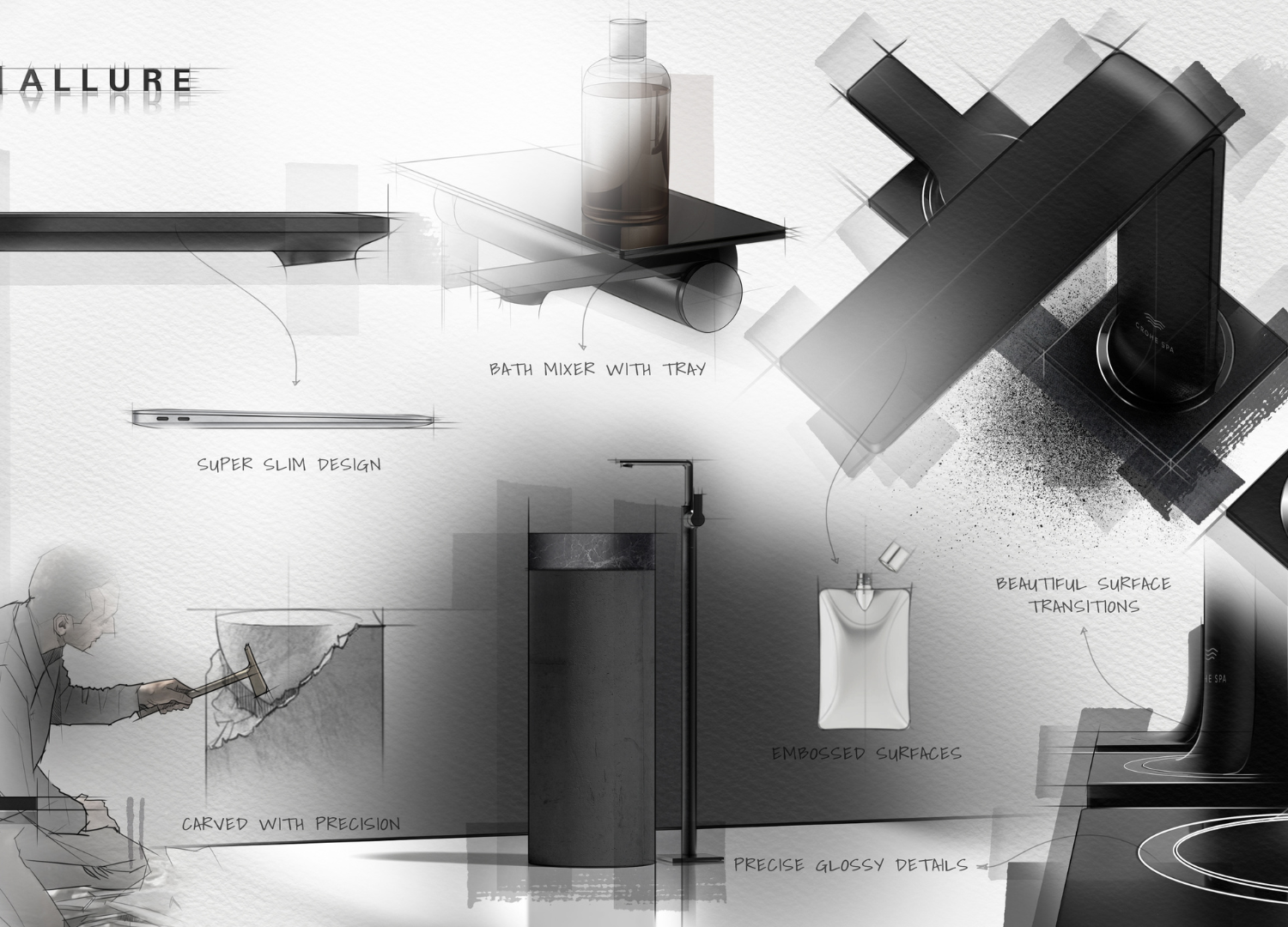
Given the increasingly advanced graphic softwares, I am fascinated by this analog dimension within LIXIL Global Design. How do you transition from paper to digital sharing, considering the size of your design team and the need to share information?
Begüm Tomruk:
“That’s a great question. So right now we’re in Düsseldorf, but we have studios spread all over the world from New York to London, Tokyo, Singapore and Shanghai. We’re a really diverse team. We share our analog sketches and convert them into digital so that there’s a decision making in the end to push that idea further and reach the market.
We do several collaborations across the globe to ensure that this process can move on. For instance, if it’s with our studio in Singapore – we hand over the open files and give the team the responsibility to work on this design process. They then combine their techniques with their tools, brushstrokes and continue the design storytelling process.
This creates a consistent approach to our process.”
A sketch is not only defined by lines – but also by colors, materials and finishes. How are they chosen and utilized? What function do they have?
Begüm Tomruk:
“Many times, when we do ideation sketching and work with ceramics, we don’t need to shade as much since they are white. So we basically use light colors of the markers.
However, if we want to give a chrome effect – which we mostly have in our product portfolio – we need the black tones as well as the contrast in between and this is really important for the CMF.
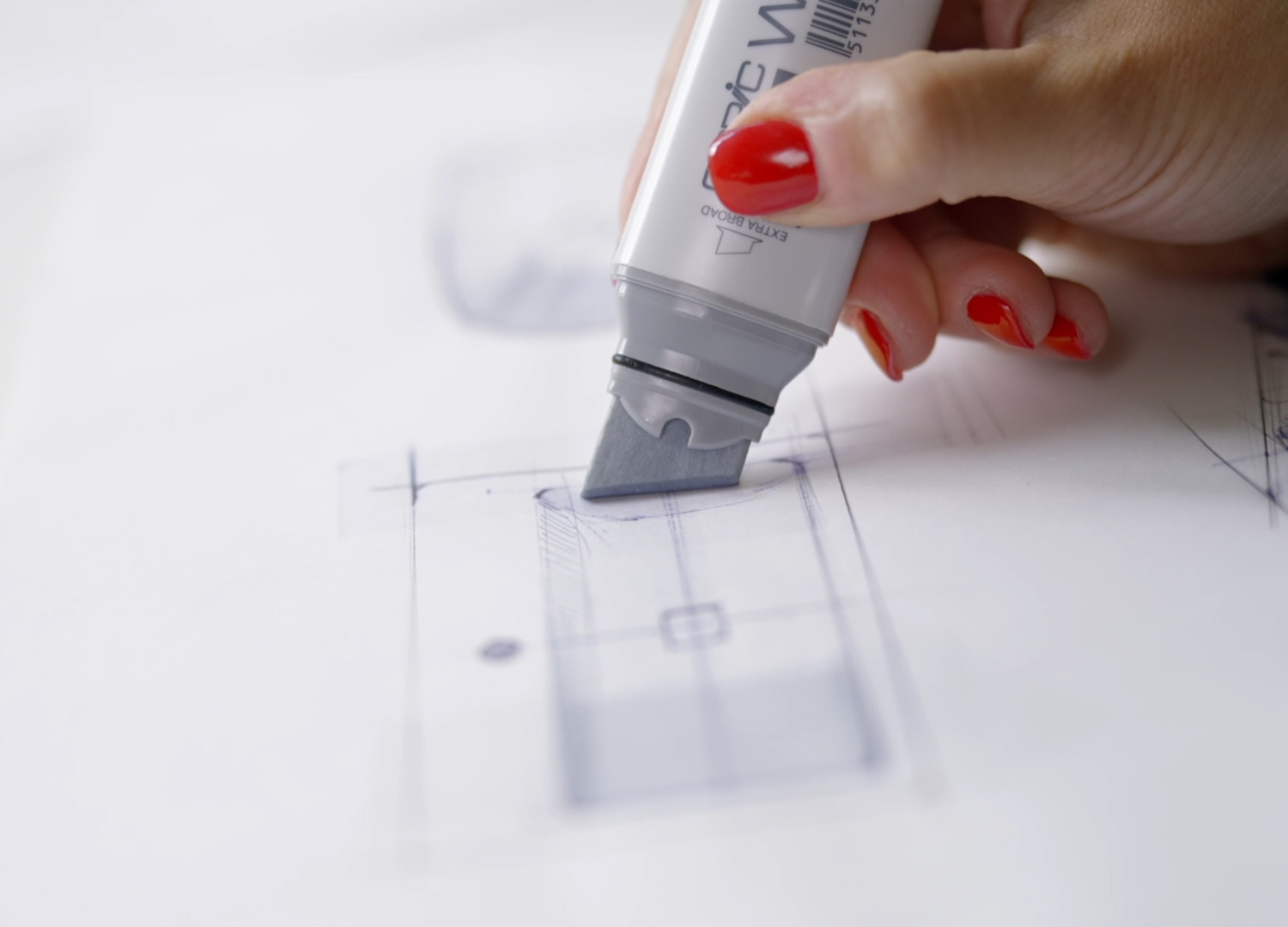
If we’re talking about a more different CMF like wood or full black and so on – then we need to go darker. And this is what we see basically in the design presentation sketches.
But starting from the basics, it is always the key. Designers can always go darker as they need to define or redefine the materials that they would like to achieve afterwards.”
What are the ‘secrets’ to making sketches that work? What information and stories do they need to convey to those who look at them?
Begüm Tomruk:
“The secret to making sketches work is not overdoing it. It’s all about keeping it simple and sketching something that is easy to understand, especially when presenting it internally or externally. This is the key.
However, on the other side, you should always remember – why you are sketching and what you are really designing.
The digital sketches are created by utilizing analog sketches as the base and building up on it. There are additionally notes written on the side about the key benefits of the design, to comprehend the key benefits of the collection.
In the end – it’s all about not overloading the designs and bringing out simplicity and meaning!
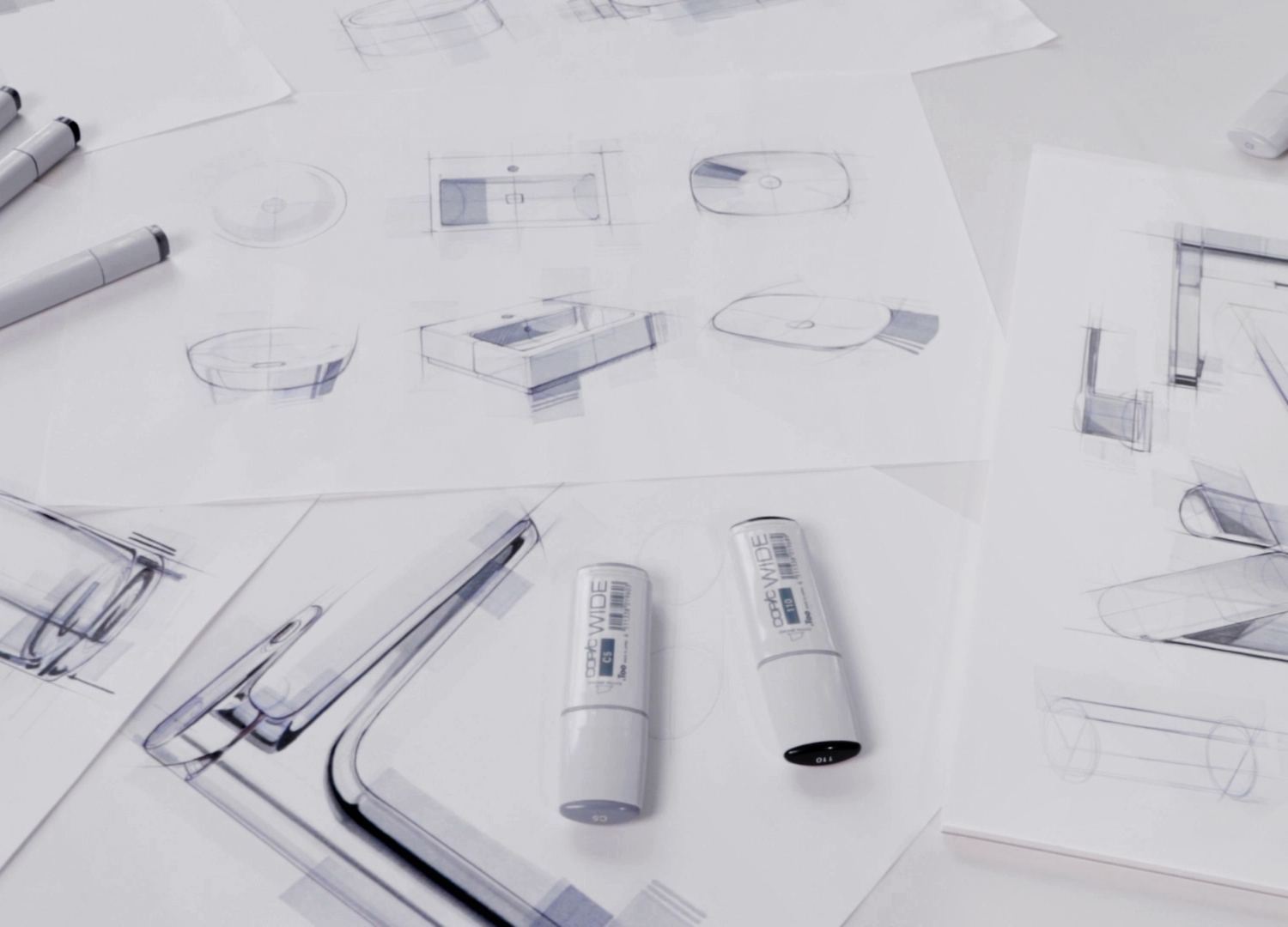
How much of the initial sketches remain in a finished product that goes to a market? What are the elements that usually persist during the design process? What gets changed and why and based on what feedback?
Begüm Tomruk:
“At first, to showcase the design at a presentation – the process needs to be filtered so that the sketch can speak for itself. It’s all about effectiveness and explaining “why” – why has someone designed something like this? How are they meeting the consumers and their needs? What kind of benefit value are they adding to their lives? This is extremely important.
If this message is clear – you are on the right track and the presentation can support this perfectly. There are many products in our catalog, such as the water sensors which started from the ideation sketch and ended up in real life, currently on the market.
This is also good motivation for the designers and it’s all about adding value to the world – one sketch at a time.”
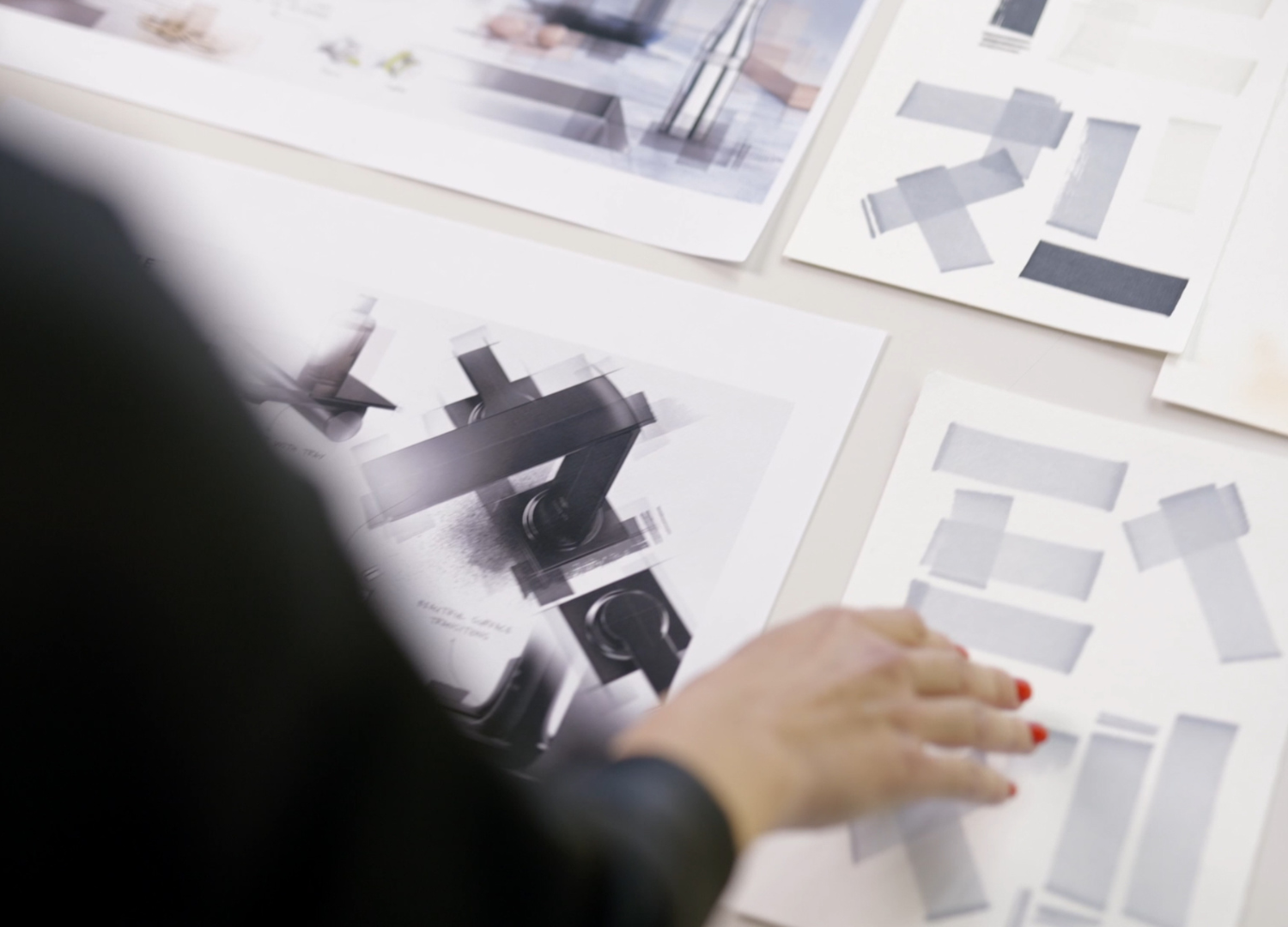
How important is the ability to sketch for an industrial designer? Why should young designers develop this skill?
Begüm Tomruk:
“This is a key question. I learnt it at university where we were forced to visualize everything in an analog way for two years. So no CAD! And I’m grateful for that education because it really gave me a skill set.
It’s not a given for all designers but if you know how to sketch and develop a product – it’s a big plus. It saves time since you don’t need to render and can solve problems with just a few sketch lines which is way simpler too. There’s always room to learn and it’s up to the designer. I would say that sketching adds authenticity as well as emotion.
At LIXIL Global Design – we have a masterclass for this purpose and some of our content is available on our Instagram account, which we utilize to educate and really transfer that knowledge to the whole global design team.”









